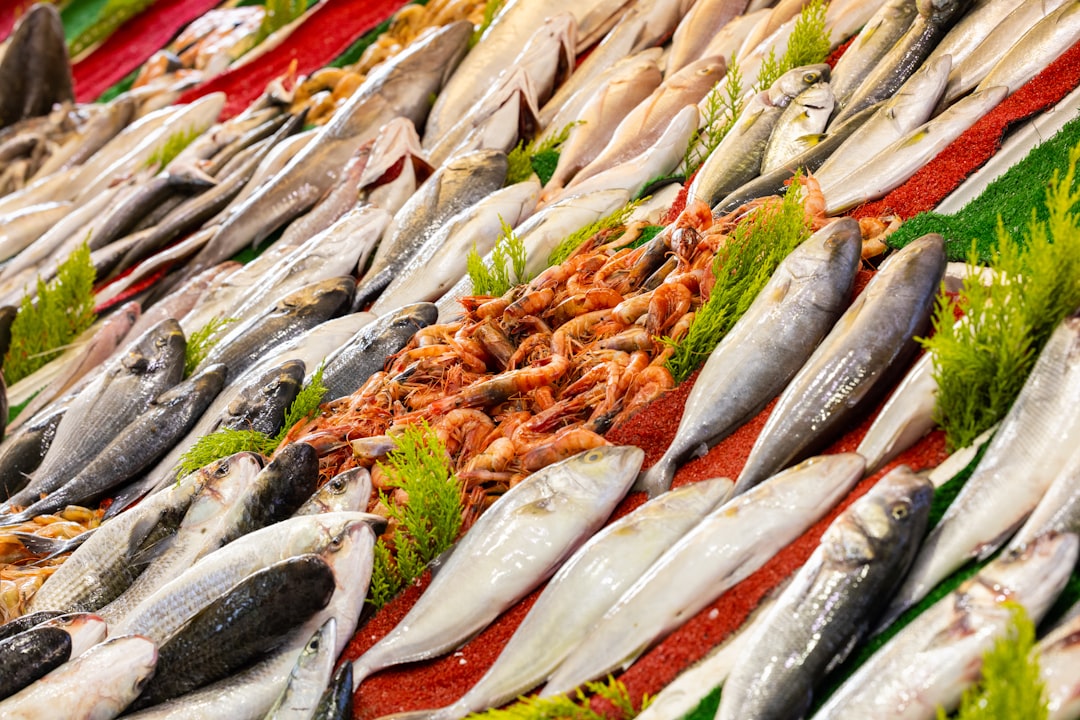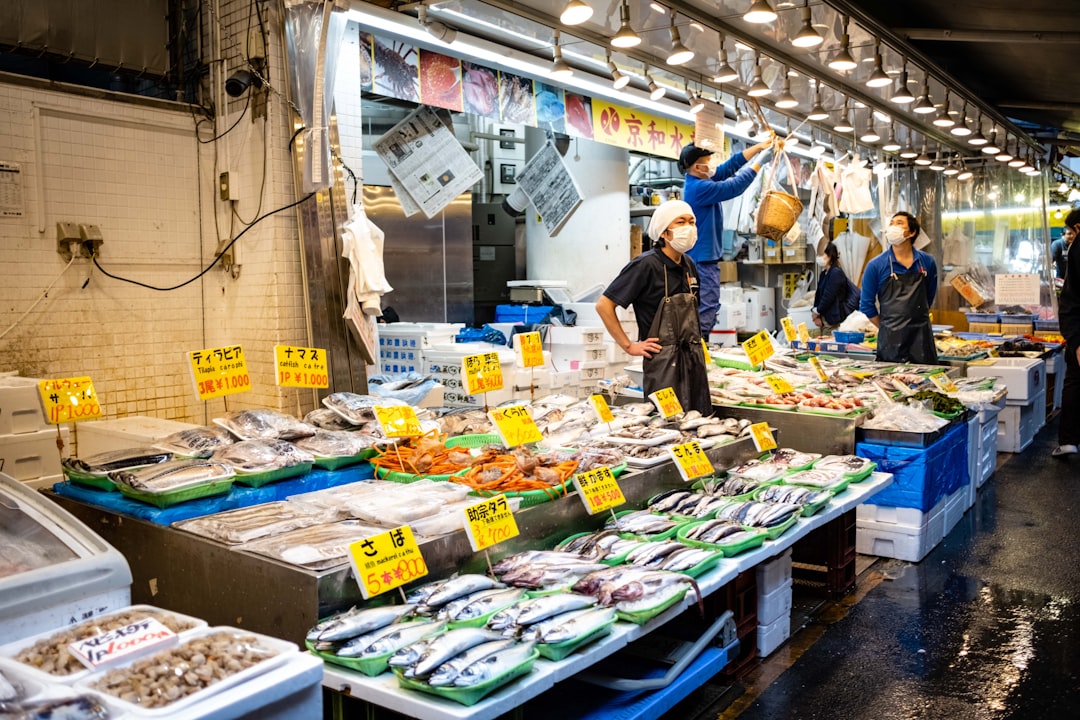

Engage prospects with a scan and streamline customer engagement with FREE QR code marketing tools by Sona – no strings attached!
Create a Free QR CodeFree consultation

No commitment

Engage prospects with a scan and streamline customer engagement with FREE QR code marketing tools by Sona – no strings attached!
Create a Free QR CodeFree consultation

No commitment
In today’s digitally driven world, QR codes have evolved from a novelty into a strategic bridge between physical seafood products and digital buyer journeys. For wholesale seafood distributors, they provide a fast, verifiable path to traceability data, real-time inventory and logistics updates, and immediate access to sales resources. That combination improves buyer confidence, reduces manual overhead, and captures the engagement signals needed to turn interest into conversion.
As regulations tighten and buyers demand deeper assurance, paper binders and static PDFs create friction that slows decisions and hides intent. QR codes eliminate that friction. A single scan from a product label, invoice, or event display can open dynamic certificates, video walkthroughs of sustainability practices, reordering forms, or sales rep contact cards. By centralizing analytics and attribution, modern platforms like Sona QR turn those scans into measurable actions, letting teams track performance and allocate resources to the placements, products, and segments that drive revenue.

A persistent operational barrier for seafood distributors is the gap between physical product interest and digital lead capture. A chef inspects a case of scallops, a procurement manager reviews a price sheet, a retailer samples new shrimp at a trade show—yet none of these moments automatically feed your CRM. Without a simple path to data-rich destinations, you miss follow-ups, waste spend on broad campaigns, and struggle to prove which touchpoints drive growth.
QR codes solve that problem when they are deployed with intention. By converting paper processes and static files into dynamic, mobile-friendly destinations, they keep every buyer interaction measurable and relevant. That means faster validation of origin and certifications, fewer compliance errors, and stronger attribution from scan to sale.
Through these steps, distributors close the data gap that has long limited traceability clarity and conversion efficiency. QR codes turn physical products into connected media, transforming everyday deliveries and displays into always-on lead generators.

Seafood supply chains can be complex and global, making buyers cautious without clear provenance. Distributors must demonstrate sustainability, catch method, certifications, temperature controls, and handling practices, often under time pressure. When these assurances rely on paperwork, teams are forced into manual lookups and phone calls that delay decisions and introduce risk.
QR codes simplify this work and seamlessly embed verification into every product encounter. A chef scanning a QR on a label can view certificates of origin, vessel information, harvest dates, and third-party approvals on the spot. A retailer scanning an invoice QR can submit a reorder request, log a quality note, or access a digital catalog that updates automatically. Instead of distributing static data that ages quickly, you deliver dynamic content that keeps pace with regulations and market needs.
For distributors that need to prove integrity and accelerate sales, QR codes provide a clear operational advantage. They create consistent, trackable touchpoints that strengthen trust and improve outcomes across every stage of the buyer journey.

A key reason QR codes are so versatile is the variety of formats and destinations you can deploy. In seafood distribution, the goal is to deliver verifiable data and practical tools at the exact moment a buyer needs them. That requires matching QR types to real-world workflows like receiving, merchandising, auditing, sampling, and reordering.
The most effective campaigns standardize on a small set of QR formats and then tailor destinations by SKU, route, or event. This keeps your system easy to manage while giving frontline teams and buyers exactly what they need within a scan or two.
With Sona QR, you can generate and manage these formats from one place. Dynamic codes make it simple to refresh content as supply changes, while scan analytics feed back into your CRM and planning tools.

Growth happens where buyers decide: on the receiving dock, in the cold room, at tastings, on the expo floor, and while reconciling invoices. Many distributors blanket their materials with generic QR codes or bury them in hard-to-scan spots. The result is low adoption and little data. High-impact deployments focus on the moments that trigger questions or actions like verification, feedback, and reordering.
Begin by mapping your typical buyer journey. Identify the friction points that stall conversions such as missing certificates, lack of pricing context, or hard-to-find reorder links. Then place QR codes that remove those obstacles in real time. Pair every code with a benefit-focused call to action so scanners know exactly what they will get.
When you integrate scan-level data with your CRM, these placements show where demand is strongest, which messages convert, and which segments respond best to your offers. That creates a repeatable playbook for growth.

Distributors lose momentum when offline interest is not converted into digital action. QR-enabled workflows fix this by connecting each encounter to a specific outcome such as traceability verification, feedback submission, or reorder initiation. The best implementations align the use case with the buyer’s context so every scan serves a clear purpose.
Start with the moments that promise the biggest return: verifying origin and quality, logging delivery experience, and capturing qualified leads. Then expand into convenience features like one-tap reorders and chef-focused content, which improve satisfaction and retention.
Together, these use cases shorten the path to purchase, protect brand reputation, and ensure the right follow-ups happen quickly. They also deliver a steady flow of engagement data that fuels smarter sales and marketing programs.
Every scan is a valuable signal: who engaged, where they were, what they wanted, and how ready they might be to buy. When you deploy unique codes at each stage of the journey, you build segmented audiences automatically. These segments can feed your CRM, email platform, and ad accounts so you can retarget based on real behavior instead of assumptions.
In wholesale seafood distribution, the most useful distinctions are role, venue, and intent. A chef scanning a case label at a restaurant has different needs than a retailer scanning a sell sheet at a regional expo. By tagging scans with context, you can deliver specific follow-ups that move each buyer forward.
This segmentation approach increases relevance, improves conversion rates, and reduces wasted spend. It also gives sales reps better context when they call or visit, which improves close rates and customer experience. For execution ideas, explore retarget strategies using first-party signals.
QR codes become exponentially more powerful when they connect your print, packaging, events, and digital channels. Instead of running disconnected campaigns, you create a synchronized system where each offline touchpoint drives online action, and every action feeds back into centralized analytics.
For seafood distributors, this integration lets you measure the impact of assets that were previously hard to track such as invoices, case labels, route signage, and trade show materials. When scan activity triggers workflows, your team can respond in real time with relevant content, offers, or support.
QR codes serve as the offline onramp to your digital marketing engine. With a platform like Sona QR, you can centralize code management, unify scan data, and sync activity to your CRM and ad platforms for cohesive attribution and optimization.
Launching a QR initiative is straightforward when you focus on outcomes and build a clean workflow from scan to conversion. Treat each deployment like a measurable campaign, even if it is as simple as adding a code to a label or invoice. Define your objective, choose the right code type, design for clarity, place it where scans are natural, and track what happens next.
The following checklist streamlines planning and helps you scale. You can start small with one or two use cases that address obvious friction points such as traceability validation on packaging and reordering from invoices. As you generate results, roll out more placements and standardize on a platform like Sona QR to manage versions, analytics, and integrations.
Clarify the specific pain you aim to solve. Examples include rapid sustainability validation at receiving, post-delivery quality feedback, or digital lead capture at trade shows. The narrower your goal, the easier it is to design a compelling CTA and measure success against meaningful KPIs.
Dynamic QR codes are ideal for most distribution use cases because they allow you to update destinations and capture analytics. Static codes can work for fixed assets that do not require tracking or changes, but they limit flexibility and insight. Start creating QR codes for free: Start creating QR codes for free.
Design for scannability and clarity. A QR code’s job is to set expectations and deliver value quickly. Visual cues and concise CTAs improve scan rates and reduce confusion.
Start where you will get the most impact. For wholesale seafood distributors, the highest-yield placements are product packaging, delivery paperwork, and event materials. Add codes to direct mail for seasonal pushes or to drive interest in new species.
Use analytics to verify what is working. Treat every QR scan as the start of a measurable journey. Track engagement by SKU, route, and event, then adjust creative and placements accordingly.
Traceability is valuable only when you can connect it to real outcomes: faster decisions, fewer errors, and more sales. Many teams stop at the scan count, which hides the real story. You need to see which codes convert, which channels drive the highest value, and how each interaction moves a buyer closer to a purchase or renewal.
Modern QR capabilities close that loop by capturing context for every scan and tying it to CRM records and revenue metrics. This lets you evaluate campaigns across placements and time, set defensible budgets, and continuously improve both traceability and conversion performance.
The result is a unified view of how offline assets drive online outcomes. You move beyond anecdotal feedback and into data-driven decisions that optimize the entire buyer journey.
Scaling QR success means moving from a few experiments to a consistent, organization-wide program. That requires standardizing your format, training teams, integrating data sources, and continually iterating on placements and content. The payoff is a network of smart touchpoints that reliably convert scans into revenue.
As you expand, resist the temptation to overcomplicate your system. Focus on the most valuable actions and the cleanest paths to those actions. Build internal muscle around testing and learning so you can keep improving scan rates and conversion quality over time.
Effective implementation improves traceability credibility, increases conversion rates, and reduces operational friction. By building QR into daily workflows, you turn every surface and document into a strategic asset.
QR codes are no longer a nice-to-have in wholesale seafood distribution. They are core infrastructure for transparency, speed, and measurable growth. When you embed QR codes at critical touchpoints, you replace friction with clarity, transform anonymous interactions into qualified signals, and build a repeatable pipeline from scan to sale.
For distributors ready to modernize, start with one or two high-impact use cases such as traceability on packaging and reordering from invoices. Use dynamic codes to maintain flexibility, add benefit-led CTAs to invite scans, and integrate analytics with your CRM. As results compound, expand to events, direct mail, and out-of-home placements. With a centralized platform like Sona QR, you can generate and manage your codes, unify data, and prove ROI from scan to revenue.
QR codes have transformed wholesale seafood distributors from relying on traditional outreach into leveraging dynamic, measurable growth opportunities. Whether it’s driving new customer acquisition, streamlining order processes, or enhancing traceability and transparency, QR codes replace manual tasks with instant, mobile-friendly interactions that capture real-time data to turn every product and marketing material into a powerful conversion tool. Imagine knowing exactly which packaging or promotional effort drives repeat orders—and having the agility to optimize campaigns instantly.
With Sona QR, you can create dynamic, trackable QR codes in seconds, update campaigns on the fly without costly reprints, and directly link every scan to increased sales and customer loyalty. No more missed leads or guesswork—just smarter, more profitable wholesale seafood distribution strategies. Start for free with Sona QR today and transform every scan into a loyal customer and lasting revenue.
The article does not list specific top wholesale seafood distributors in the US.
You can ensure sustainable sourcing by using QR codes on seafood products that link to dynamic pages showing certificates of origin, catch methods, sustainability profiles, and third-party approvals.
QR codes provide immediate access to origin data, certifications, temperature logs, and handling instructions, reduce manual lookups, increase buyer confidence, accelerate sales cycles, and allow dynamic content updates without reprinting.
By scanning QR codes on packaging or documents, buyers can instantly view certificates, HACCP logs, compliance hubs, and quality assurance feedback forms maintained dynamically by the distributor.
Consider the distributor's ability to provide transparent traceability, up-to-date certifications, real-time inventory and logistics updates, sustainability practices, and digital tools such as QR code-enabled verification and reordering.
The seafood supply chain involves sourcing from vessels or farms, certification and handling processes, distribution through master cartons and case labels, and delivery to buyers, with traceability and quality checks at every stage.
The article does not specify the types of seafood available for wholesale.
Tracking is enabled by scanning QR codes on packaging or shipping documents that link to real-time data including catch area, vessel or farm information, harvest dates, certifications, and handling standards.
Distributors must comply with regulations including maintaining certifications like MSC or ASC, HACCP documentation, temperature controls, and recall notices, all of which can be dynamically updated and accessed via QR codes.
Define your use case, choose dynamic QR code types, design codes with clear CTAs, deploy them at high-intent touchpoints like packaging and invoices, train your team, and track scan analytics to optimize performance using platforms like Sona QR.
Use Sona QR's trackable codes to improve customer acquisition and engagement today.
Create Your FREE Trackable QR Code in SecondsJoin results-focused teams combining Sona Platform automation with advanced Google Ads strategies to scale lead generation

Connect your existing CRM

Free Account Enrichment

No setup fees
No commitment required

Free consultation

Get a custom Google Ads roadmap for your business






Launch campaigns that generate qualified leads in 30 days or less.
